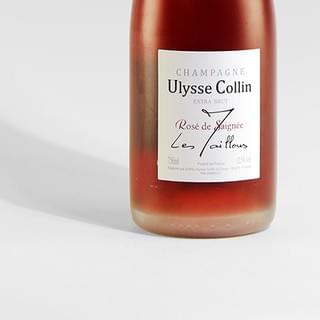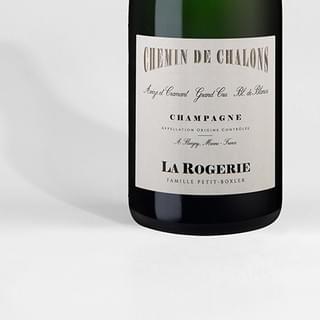
Champagne
EBULLIENT
Not unlike the Beaujolais, Champagne has changed dramatically over the past two decades. Thanks to people such as Anselme Selosse, this region has completely reassessed wine is made there, and the result is that it is without doubt the most ebullient of French wine regions.
Roses de Jeanne (Cédric Bouchard)
Celles-sur-Ources
One of Champagne’s most mysterious and smallest domaines, Cedric Bouchard is a bit of a hermit. Located in Landreville, he rarely travels, rarely receives visitors and spends most of his time in his vineyards or cellar
The wines he produces (no more than 15,000 bottles per year) are impossible to find and for a good reason. They are incredibly distinctive being 100% based on a single vintage, single vineyard and single grape variety
Additionally, by keeping his yields lower than even many top Burgundy producers’ ,he gets a concentration and natural ripeness that further inform his style. We don’t know any champagnes that are quite this captivating and that come remotely close to what Bouchard is producing
🍀 Organic
1.37 ha
THE WINES
Côte de Val Vilaine, Brut, Blanc de Noirs -Pinot Noir
Côte de Béchalin, Brut, Blanc de Noirs -Pinot Noir
La Presle, Brut, Blanc de Noirs -Pinot Noir
Les Ursules, Brut, Blanc de Noirs - Pinot Noir
La Haute Lemblé, Brut, Blanc de Blancs -Chardonnay
La Bolorée, Brut, Blanc de Blancs -Pinot Blanc
Le Creux d’Enfer, Brut, Rosé de Saignée -Pinot Noir

Ulysse Collin
Congy
Olivier Collin is a larger-than-life character. Very much aware of where he wants to take his estate, he has worked tirelessly ever since taking back parts of his family vineyards in 2003
Having been awarded 100 points by the Wine Advocate’s William Kelley in 2021 shows to what extent his wines have not only become coveted and sought after, but are rightfully seen as equals to the very grandest wines made in Champagne today
Stylistcally, they are very much Montrachets with bubbles, being vinified under oak, and having incredible concentration, richness, and complexity. Real vin de Champagne!
🍀 Organic
8.7ha
THE WINES
Les Roises, Extra-Brut, Blanc de Blancs
Les Pierrières, Extra-Brut, Blanc de Blancs
Les Maillons, Extra-Brut, Blanc de Noirs
Les Maillons, Extra-Brut, Rosé de Saignée
Les Enfers, Extra-Brut, Blanc de Blancs

Alexandre Filaine
Damery
After having worked at Bollinger for a long time, Fabrice Gass has set up his own domaine producing no more than 5,000 bottles per year
Located in Damery, with vineyards planted mostly to very old-vine Pinot Meunier, Gass’ vinification methods very much reflect those seen at Bollinger in the past: vinification and ageing under old wood (some barrels over 100 years old), ageing under natural cork and a liqueur d’expédition made from old wine and cane sugar. This results in wines that are intense, incivise and immensely complex.
🍀 Organic
1 ha
THE WINES
Cuvée Damery Brut
Cuvée Sensuum Vertigo Brut
Cuvée Spéciale Brut
Champagne La Rogerie
Avize
La Rogerie was founded in Avize in 2016 by François Petit and Justine Boxler, who both come from vigneron families: François’s grandparents bought their vineyards in Avize in 1940s, whereas Justine’s family bought them in 1640 in Niedermorshwihr in Alsace.
The Champagne vineyards were planted in the 50s in the heart of the Côte des Blancs: mostly in Avize, extend to Cramant and Oger, all classified as Grand Cru villages. Those in Alsace count parcels in the fantastic Grand Crus of Sommerberg and Brand, allowing the couple to produce wines of incredible density and character.
The vineyard work is done in a natural way, with no pesticides, to recreate biodiversity and strengthen the soil structure, as well as the old vines features. Since 2018 they have started vinifying independently and have just released their first own Champagnes and Alsatian whites. Watch this space!
🍀 Organic
2 ha
BEAUJOLAIS - BORDEAUX - CHAMPAGNE - ALSACE -LOIRE VALLEY - JURA - SAVOIE - RHONE VALLEY - PROVENCE- LANGUEDOC - AUSTRIA - GERMANY - ITALY - SPAIN








